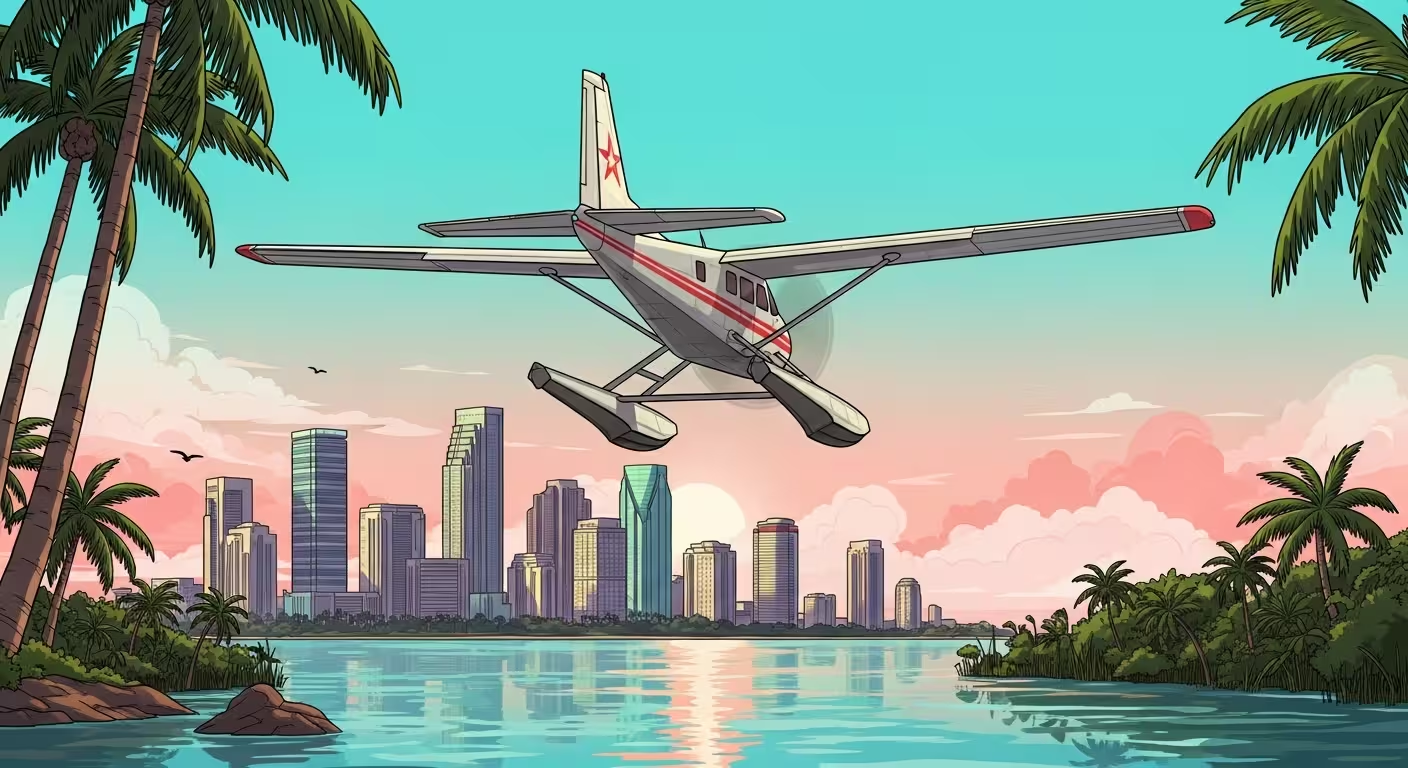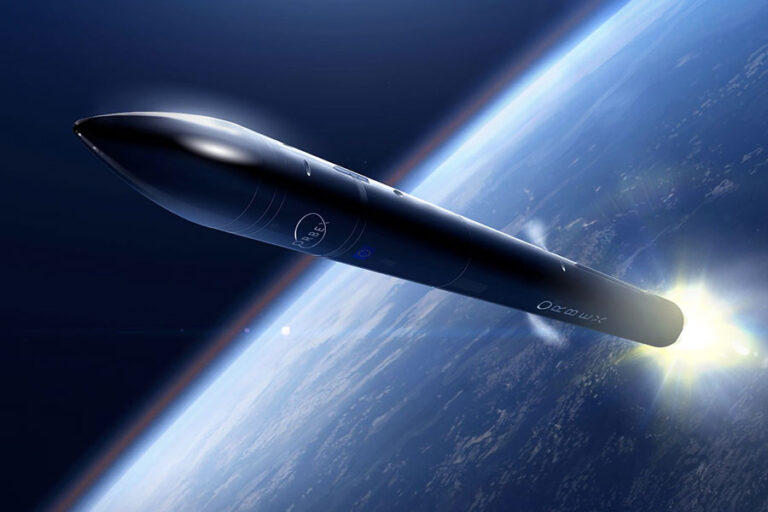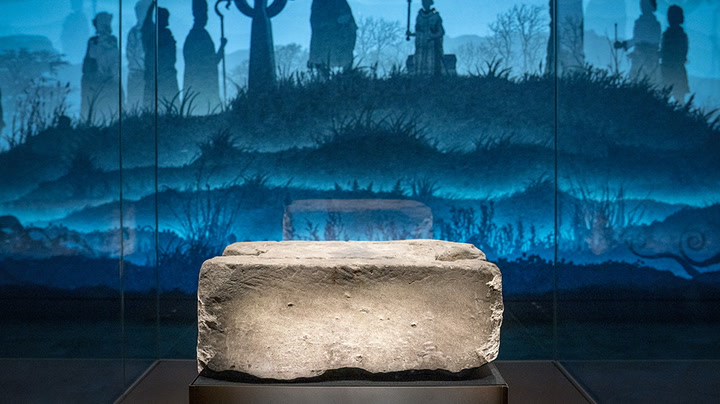Introduction: The Most Anticipated Canvas in Gaming
Grand Theft Auto VI is generating incredible excitement as it promises to deliver the most visually stunning and culturally immersive experience in the history of open-world gaming.
Powered by Rockstar’s groundbreaking RAGE engine and supported by industry-leading innovations like real-time ray tracing and dynamic global illumination, GTA VI reconstructs Vice City with vibrant neon lights, photorealistic weather phenomena, and lifelike water reflections, all designed to immerse players in a hyper-realistic Miami.
Environmental details—from swaying palms to ultra-dense crowds—feel distinctly alive, enhanced by nuanced NPC behaviours and cinematographic lighting.
You can dive deeper into the game’s visual breakthroughs by reading this comprehensive graphics breakdown on GTANew, exploring the detailed tech breakdown of the GTA 6 trailer by Eurogamer Digital Foundry, or watching an in-depth video analysis on YouTube.
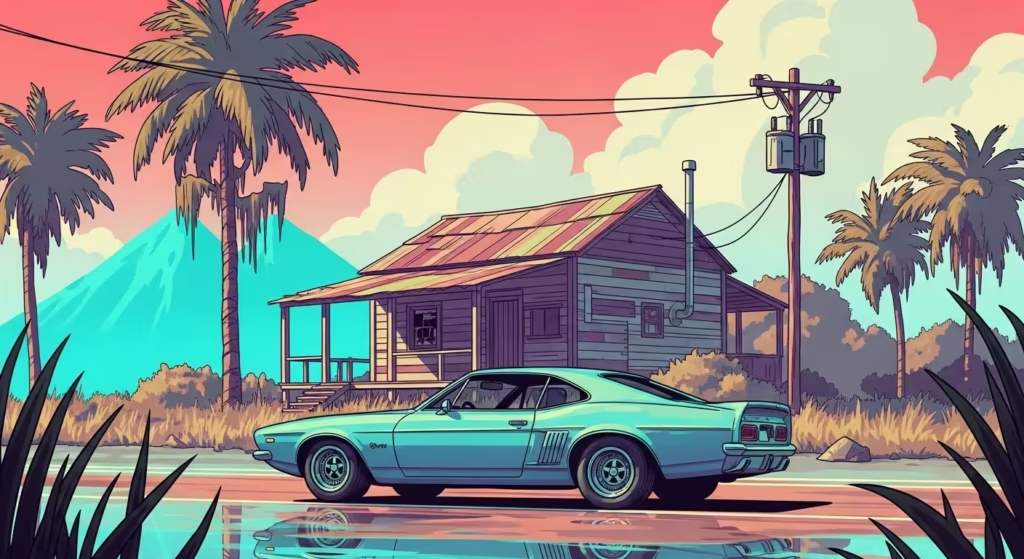
What truly sets GTA VI apart is Rockstar’s commitment to blending technical artistry with evocative storytelling. The city’s architecture reflects an intentional, painterly design ethos, where expressive colour palettes and dynamic lighting underscore the satirical undertones of the narrative.
With each trailer, Vice City emerges not simply as a backdrop but as an interactive character saturated with atmosphere and culture—drawing inspiration from both real-world Miami and the legacy of previous Rockstar worlds.
Performance and scalability ensure these advancements reach players on PC and consoles alike, allowing for highly detailed environments and seamless transitions between story-driving set pieces.
For a deeper look at the engine’s capabilities and narrative impact, you can read this trailer analysis on Recep Emre Ercetin’s site or explore a candid designer’s perspective on worldbuilding over at Reddit.
The Engine of Creation: Evolution of RAGE Technology
Foundations of a Virtual World
The Rockstar Advanced Game Engine (RAGE) has evolved into RAGE 9, the cutting-edge technology powering Grand Theft Auto VI, specifically designed to meet the demands of today’s vast urban environments.
This new engine introduces revolutionary features including real-time physically simulated water, enhanced vehicle deformation, and dynamic weather systems that create an immersive, living world.
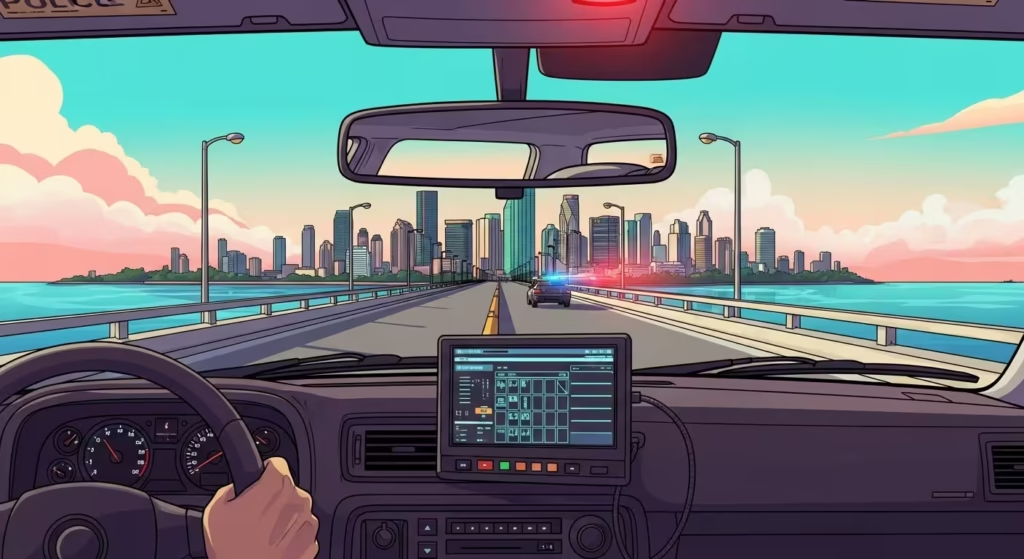
It supports ultra-high-resolution textures up to 16K, surpassing even Unreal Engine 5, and incorporates advanced lighting techniques like volumetric clouds and real-time ray tracing to deliver unparalleled visual fidelity in Vice City.
Beyond these visual advancements, RAGE 9 focuses on system-wide coherence and interactivity, boosting artificial intelligence to support natural NPC behaviors and meaningful reactions from the environment. This approach ensures a harmonious urban ecosystem where traffic, physics, and NPCs operate seamlessly.
These technical breakthroughs position GTA VI to set a new industry standard in open-world game design.
For a detailed overview of RAGE 9’s capabilities and its impact on GTA VI, you can watch an insightful YouTube breakdown on the RAGE 9 engine, read a discussion on Reddit about the latest RAGE engine, or explore the Rockstar Advanced Game Engine Wikipedia page for historic context and technical progression.
Technical Artistry: Beyond Graphical Flourishes
Table: Evolution of RAGE Engine Capabilities
| Feature | RDR2 Implementation | GTA VI Enhancements |
|---|---|---|
| Water Physics | Basic wave systems with limited interaction | Real-time physically simulated water with accurate buoyancy and wave propagation |
| Lighting Model | Physics-Based Rendering (PBR) | Enhanced PBR with physically simulated light and improved global illumination |
| Character Animation | Euphoria-based natural movement | Advanced locomotion technology for seamless transitions and context-aware animations |
| Environmental Interaction | Limited destructibility and deformation | Improved vehicle deformation, dynamic vegetation, and object physics |
Technological advancements in RAGE 9 go well beyond surface-level upgrades, delivering a new standard in visual authenticity and environmental storytelling. Physics-Based Rendering (PBR) materials, first seen in Red Dead Redemption 2, are now pushed to impressive new heights.
Every surface dynamically mimics real-world optical properties, accurately reflecting and refracting light based on its material nature. This brings an immersive layer of realism where, for instance, the pastel-hued art deco hotels of Ocean Beach respond differently to Florida’s sunlight compared to the grimy asphalt of Port Gellhorn’s industrial zones.
This sophisticated material accuracy enriches narrative immersion, making the world visually and atmospherically distinct at every turn. These visual nuances in RAGE 9 contribute significantly to storytelling by reinforcing place and mood through a meticulously crafted digital environment.
How will Vice City Look and Feel in GTAVI?
Reimagining Vice City for the Modern Era
The return to Vice City in GTA 6 represents both a nostalgic homecoming and a bold reinvention. The game shifts away from the original’s 1980s neon fantasy to a modern-day, complex vision of Florida that captures “the darkest side of the sunniest place in America.” This vision is brought to life through a carefully crafted colour palette that contrasts vibrant, saturated tones in tourist hotspots and nightlife districts with desaturated, gritty hues in industrial and backwater areas.
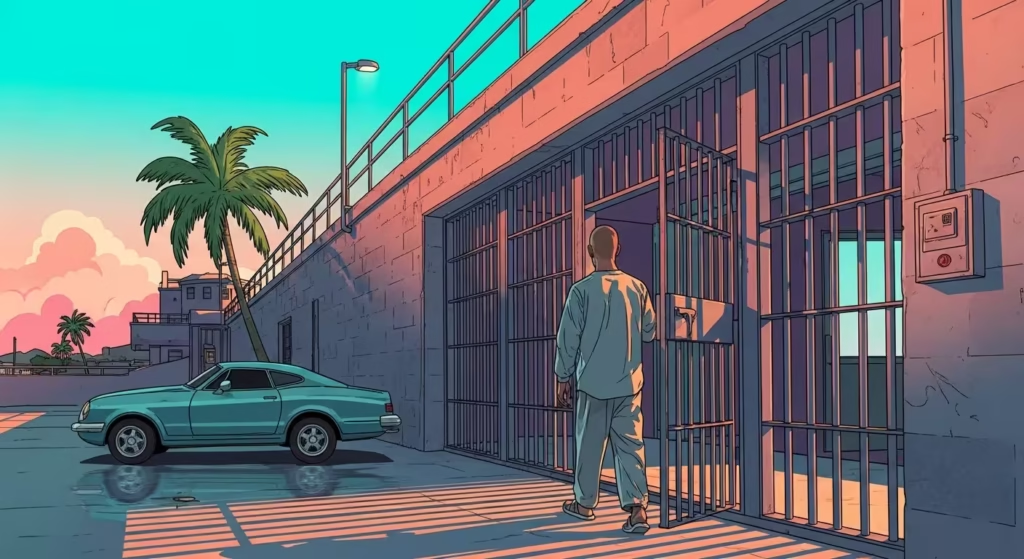
The game embraces Florida’s quirky “Florida Man” meme culture, creating a world where absurdity and danger coexist, ranging from alligators wandering urban streets to the pervasive influence of social media personalities. This rich visual and narrative duality adds depth and sharp social commentary without compromising immersion.
For more details, visit the official Rockstar Games GTA 6 page, GTA 6 map & locations guide, and GamesRadar GTA 6 coverage.
Vice City: Inspired by the Real Miami
Rockstar Games’ Vice City draws heavy inspiration from the vibrant city of Miami, Florida. From the iconic Art Deco architecture of Ocean Drive to the neon-lit nightlife, the game’s design mirrors Miami’s unique aesthetic. This connection is further explored in our article, where we delve into how Rockstar recreated the essence of Miami within the game.
For a visual comparison, check out the following video that showcases real footage of Miami in 4K.
The Architecture of Crime
Rockstar’s depiction of Vice City in GTA 6 emphasises a highly detailed and diverse environment, functioning as more than just a backdrop—they shaped it as a narrative character. The city showcases distinct neighbourhoods, each with unique architectural styles designed to reflect social hierarchies and story themes.
Ocean Beach features art deco hotels and shiny sands, telling a story of opulence and leisure, while Little Cuba’s panaderías and the gritty Tisha Wocka flea market depict a more culturally rich, working-class vibe. These environments visually reinforce the socioeconomic divides within the city’s criminal fabric, embedding storytelling in the environment itself.
For more details, see the maps and neighbourhood breakdowns in GTA 6’s official locations or GTA Wiki.
Character Design: The Faces of a Criminal Underworld
Protagonists as Visual Archetypes
The central protagonists of GTA 6, Jason and Lucia, represent a fresh departure in character design and narrative depth within the series. Jason’s tough military background and work as a drug runner in the Keys are reflected through his utilitarian clothing and rugged appearance, while Lucia’s fierce loyalty and prison history give her a more assertive stance and determined expression.
Their visual chemistry in official artwork underscores their Bonnie-and-Clyde partnership, using matching colour accents and complementary poses to convey their strong bond without dialogue.

This detailed character design extends to the supporting cast, creating a unified visual narrative across the game’s world.
For more on these characters, see profiles on Rockstar Games’ official site, detailed descriptions at GameRant, and fan art on ArtStation.
Supporting Cast: Eccentricity as World-building
Table: Supporting Character Design Analysis
| Character | Visual Design Elements | Narrative Function |
|---|---|---|
| Boobie Ike | Flamboyant attire signaling success; juxtaposition of street origins with luxury items | Embodies the “criminal to legitimate entrepreneur” fantasy; connects vice to business |
| Cal Hampton | Unkempt appearance; soiled t-shirts; paranoid body language | Represents the conspiracy theory undercurrent of modern culture; provides comic relief |
| Real Dimez | Carefully crafted personas blending street authenticity with social media aesthetics | Illustrates the modern intersection of crime, music, and digital celebrity culture |
| Raul Bautista | Classic criminal elegance with white suits and confident posture | Bridges nostalgic Vice City glamour with contemporary criminal enterprises |
The supporting cast in GTA 6 is designed with saturated archetypes that fill Vice City with vivid, larger-than-life personalities. Each character’s visual design tells a story before any dialogue is spoken.
For example, Boobie Ike’s flashy yet polished wardrobe signals his rise from street criminal to business mogul, while Cal Hampton’s dishevelled look and paranoid mannerisms perfectly capture his conspiracy theorist mindset.
Rockstar’s use of visual immediacy helps players quickly grasp social hierarchies and relationships within this sprawling world.
For further details on these characters, see the comprehensive GTA 6 characters guide, the GTA Wiki, and an in-depth look at the supporting cast on GamesRadar.
Environmental Storytelling: The Many Worlds of Leonida
Beyond the Urban Sprawl
The state of Leonida in GTA 6 extends far beyond Vice City, showcasing diverse environments that enrich the game’s worldbuilding.
From the sprawling Grassrivers swamps with their dense mangrove forests and lurking predators to the faded resort town of Port Gellhorn—now held together by “booze, painkillers, and energy drinks from the gas station”—each location tells a rich story through distinct visuals and atmosphere. These areas not only highlight natural beauty and decay but also reflect cultural clashes and social struggles.
Players can explore this expansive world that balances untamed wilderness with urban decline, deepening narrative immersion.
For an in-depth look at Leonida’s regions, check out guides on GTA Base’s Leonida map and IGN’s Leonida locations.
The Leonida Keys in GTA 6 offer a relaxed tropical vibe that contrasts sharply with the dangerous waters surrounding them. Ambrosia, the industrial heartland of Leonida, showcases a stark visual narrative of traditional American industry facing modern economic decline, centred around a sprawling sugar refinery complex and a gritty, working-class community.
Mount Kalaga National Park provides dense, lush forests that serve as hunting grounds for wildlife as well as the “hillbilly mystics and paranoid radicals” who inhabit these remote areas.
This regional diversity highlights Rockstar’s dedication to environmental pacing, ensuring players encounter a wide variety of visually distinct biomes throughout their journey.
For more detailed insights, visit IGN’s Ambrosia guide and GTA Base’s map and location breakdown.
The Architecture of Decay and Luxury
The environmental design in GTA 6 extends beyond natural beauty to capture architectural storytelling reflective of deep socioeconomic divides.
The pastel-coloured art deco hotels of Ocean Beach embody wealth and leisure, standing in stark contrast to the neglected cheap motels, shuttered attractions, and empty shopping centres that mark Port Gellhorn’s decline. This deliberate visual stratification makes inequality clearly visible in the built environment, reinforcing the game’s themes of social disparity without explicit narrative exposition.
Such environmental cues allow players to absorb the tensions and histories embedded in each locale.
For more on these design aspects, see detailed environmental analyses on GTABuzz and GamingBible’s GTA 6 trailer insights.
GTA 6 marks a major evolution in architectural authenticity, extending detailed environmental storytelling into interior spaces.
Unlike previous titles where buildings often served as impenetrable facades, leaked information suggests players will have unprecedented access to numerous interiors, enhancing immersion significantly. Interiors aren’t just static backdrops; they feature unique layouts, interactive elements, and varied furniture arrangements that make each building feel truly inhabited.
This spatial verisimilitude enriches gameplay, allowing players to explore, hide, or engage in combat within these spaces, creating a dynamic experience. For further insights on GTA 6’s interiors and environmental design, check sources like GTA Wiki Interiors, YouTube deep dives on enterable buildings, and discussions on Reddit’s GTA 6 community.
Next-Generation Graphics: The Pursuit of Photorealism
Ray Tracing and Global Illumination
One of the standout technical achievements in GTA VI is the use of advanced ray tracing technology, which significantly enhances the realism of lighting and shadows throughout the game’s expansive world. This technology creates authentic reflections where buildings mirror each other’s surfaces, cars accurately reflect their surroundings, and sunlight shimmers naturally on water bodies, approaching a photorealistic quality.
Additionally, the game employs an enhanced global illumination system, simulating how light bounces off surfaces to create an organically lit environment that feels emergent and dynamic rather than artificially pre-set.
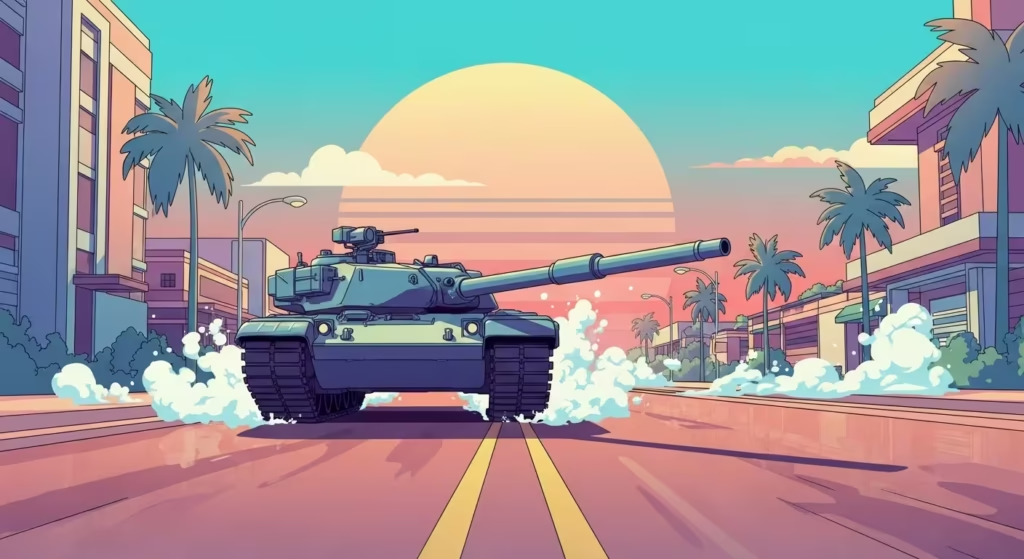
Despite the performance trade-offs, this focus on visual fidelity marks a new pinnacle for immersive, believable game worlds, contributing greatly to atmosphere and narrative immersion. For deeper insights, refer to analyses on GTABuzz ray tracing features and IMETATECH’s technology breakdown.
The integration of advanced ray tracing in GTA VI across the expansive world of Leonida stands as a significant technical feat. Traditional ray tracing demands substantial computational power, but Rockstar’s engineering innovations have optimized these processes to run effectively on current console hardware without sacrificing performance.
This optimisation ensures consistent, realistic lighting scenarios that dynamically respond to the time of day and weather conditions, moving away from static, pre-set “golden hour” lighting specifically designed for trailers.
As a result, players experience seamless visual transitions and natural atmosphere changes, enhancing immersion and making the game world feel more alive and authentic. For more on these technical breakthroughs and performance strategies, explore detailed analyses at GTABuzz’s ray tracing feature review and IMETATECH’s technology breakdown.
Revolutionary Water and Weather Systems
The water physics in GTA VI represent a groundbreaking innovation within the RAGE engine, featuring real-time physically simulated water rather than the traditional mesh-based systems of previous games. This advanced simulation allows for realistic behaviors such as wave propagation, buoyancy, and dynamic interaction with objects and characters, making aquatic environments integral to gameplay rather than mere decorative elements.
Rockstar reportedly dedicated a specialised team of engineers to develop this system, aiming to encapsulate natural water dynamics including tides, surfing, hurricanes, and variable weather effects.
This advancement pairs with a sophisticated weather system where “gusts of wind will batter vegetation and create waves that will disturb the peace and quietness of the beach” . The environmental artists have designed these systems to impact not just visuals but gameplay—with rain and wind affecting vehicle handling during high-speed travel, creating a world where weather patterns matter beyond atmospheric effect .
The Future of Game Art: AI and Ethical Considerations
Next-Generation NPC Behaviors
While specific implementation details remain closely guarded, industry analysis suggests GTA VI will leverage artificial intelligence to create more believable non-player characters with advanced behavioural patterns.
The potential exists for “AI-powered NPCs and traffic systems” that generate “more lifelike pedestrian behaviours, diverse driving patterns, and responsive reactions to the player’s actions”.
This represents the next evolution of the Euphoria animation system that first gave Rockstar’s characters physical weight and realistic reactions.
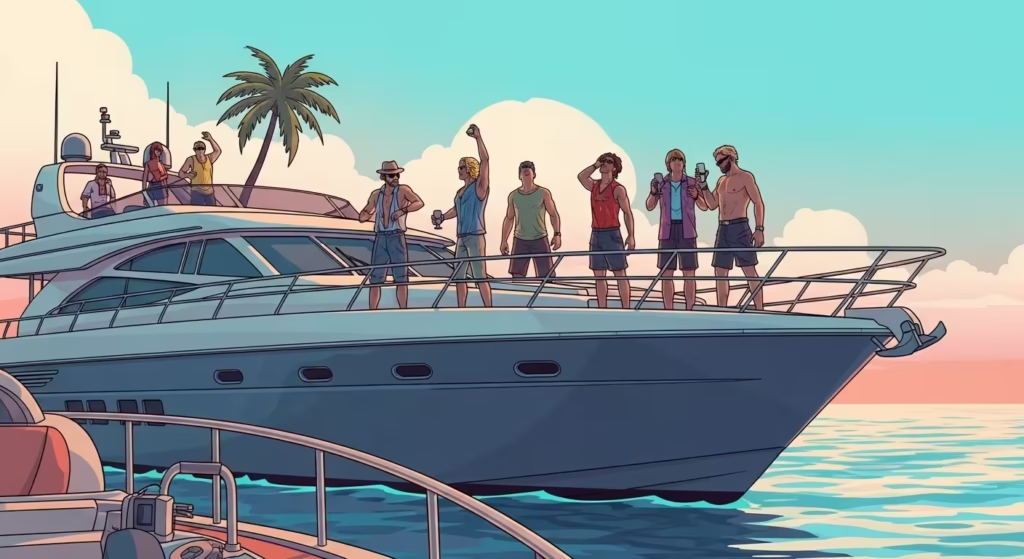
GTA VI represents a significant evolution in Rockstar’s use of the Euphoria animation system, which was first introduced in Grand Theft Auto IV and later refined in Red Dead Redemption 2. This system enables characters to have physics-based, dynamic movements and reactions, adding a layer of realism and unpredictability to NPC behaviours.
In GTA VI, industry experts suggest Euphoria will be further enhanced by artificial intelligence, allowing NPCs to demonstrate advanced behavioural patterns such as lifelike pedestrian interactions, varied driving styles, and responsive reactions to player actions.
Importantly, the developers at Take-Two Interactive emphasise that AI complements human creativity without replacing it, ensuring handcrafted detail remains central to the game’s immersive world.
This philosophy balances procedural realism with narrative craftsmanship, maintaining a rich, believable environment filled with characters who move and behave authentically. For further exploration, see GTA Wiki’s detailed overview of Euphoria, and analyses on the evolution of the system.
The Artist’s Role in an AI-Assisted Pipeline
GTA VI takes Rockstar’s NPC behaviour to a new level through the evolution of the Euphoria animation system combined with advanced artificial intelligence.
Euphoria underpins lifelike, physics-based character motions with realistic weight and reactions, and in GTA VI, this is further enhanced by AI-driven behaviours that create dynamic, responsive NPCs. These characters exhibit complex daily routines, diverse driving patterns, and adaptive reactions to the player’s actions, resulting in a truly immersive world where NPCs remember past interactions and change their behaviour accordingly.
Take-Two CEO Strauss Zelnick emphasises that AI is a tool to augment human creativity, not replace it, ensuring that handcrafted details remain central to the game’s artistry.
This balance delivers an unprecedented layer of realism while preserving the creative vision and employment of human artists. For an in-depth overview, see GTA Wiki on Euphoria and insights from GamingBolt.
The artists and designers behind GTA VI
Here is a summary of the key artistic leadership and team structure identified for GTA VI:
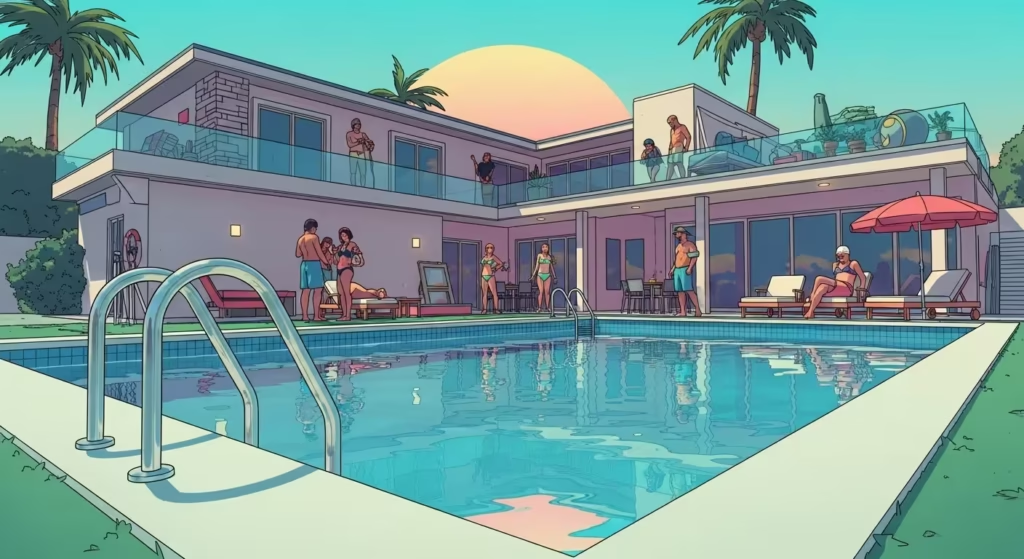
Digging Deeper into the Art Department
To help with your article, here’s more context on the people and structure behind the game’s design.
- The Art Director’s Impact: The Art Director is responsible for establishing the game’s entire visual style, from the color palette and overall mood to the detail in environments and character design . Their decisions are fundamental to creating an immersive and believable world that enhances the story and drives player engagement .
- A Collaborative Global Effort: The development of GTA VI marks a significant shift from being led solely by Rockstar North to a truly global collaboration across all of Rockstar’s studios . A standout example is Rockstar India, which has been entrusted with the exclusive creation of a key part of the map called “Vice Beach”. This highlights the importance of specialised teams in environmental design and asset creation.
- The Iconic 2D Artist: While 3D art and environments are crucial, the series’ distinct 2D aesthetic is largely credited to illustrator Stephen Bliss . His gritty, character-driven illustration style has been synonymous with Grand Theft Auto for over 20 years, influencing everything from in-game artwork to marketing materials.
- A Foundation of Experience: According to a former developer, about 80% of the team that worked on Grand Theft Auto IV was still at Rockstar North working on GTA VI . This high retention rate of veterans suggests a strong continuity of the studio’s core design philosophy and a deep well of institutional knowledge.
Conclusion: The New Gold Standard in Game Design
Grand Theft Auto VI, set for release on 26 May 2026, is poised to be a landmark in game design, blending cutting-edge technology with profound artistic vision. Rockstar’s meticulous crafting of the fictional state of Leonida—with its vibrant urban sprawl, diverse natural biomes, and deeply nuanced characters—creates a world that is at once exaggeratedly satirical and strikingly authentic.
Visual innovations like advanced ray tracing, real-time water physics, and AI-driven NPC behaviors contribute to an immersive experience where every element—from architecture to lighting—reinforces narrative and player agency.
This combination positions GTA VI not just as the next franchise installment but as a potential watershed moment in how videogame worlds are conceived and experienced. The official Rockstar page and recent coverage provide further insight into this historic upcoming release (Rockstar Games, GamesRadar GTA 6 Guide, Wikipedia GTA VI).

Listen to the GTA VI Art Podcast
Delve deeper into the artistic evolution of Vice City in Grand Theft Auto VI with our latest podcast episode. Join us as we explore Rockstar Games’ design choices, from neon-lit streets to intricate architecture, bringing this iconic city to life.
Gain insights into the creative process behind the game’s visual aesthetics and how they pay homage to the original Vice City.
Experience a visual journey through the artistic brilliance of Vice City in Grand Theft Auto VI. Our latest video offers a detailed analysis of the game’s design elements, highlighting the blend of nostalgia and modern aesthetics.
See firsthand how Rockstar Games has reimagined the neon-soaked streets, architecture, and character designs that define this iconic city.
GTA VI offers an unparalleled masterclass in world-building and technical execution that signifies a maturation of the open-world genre.
Through the seamless integration of advanced AI systems, sophisticated environmental design, realistic physics, and cutting-edge ray tracing technology, Rockstar creates a world that is both fantastically exaggerated and remarkably authentic. This blend enhances storytelling, satire, and player agency, setting a new benchmark for immersive virtual worlds.
As of now, GTA VI is scheduled for release on 26 May 2026, and it is widely expected to influence game design standards and inspire future creators by demonstrating how to combine systemic complexity with artistic control, pushing the boundaries of interactive entertainment.
This upcoming release represents not just a game but a living, breathing digital environment—a work of art reflecting the beauty, absurdity, and complexity of the real world. Its ultimate legacy may well be how it elevates player expectations and encourages designers to innovate without limits, making it a landmark moment in gaming history.
